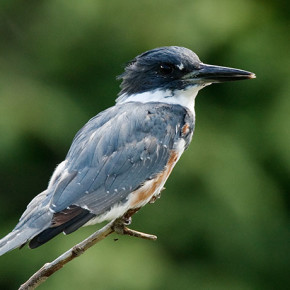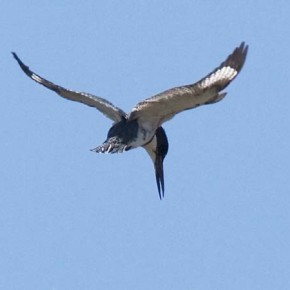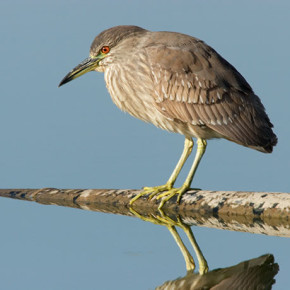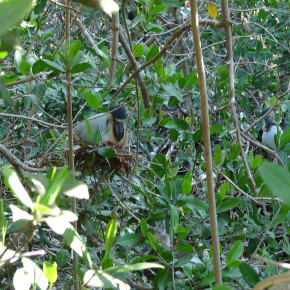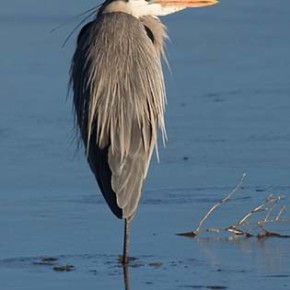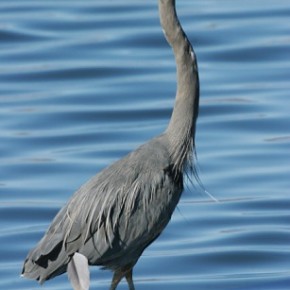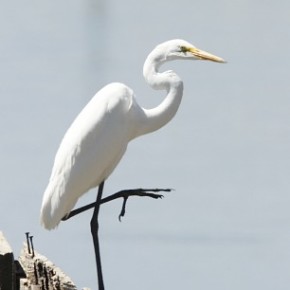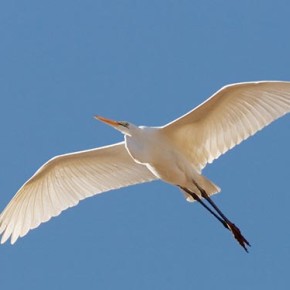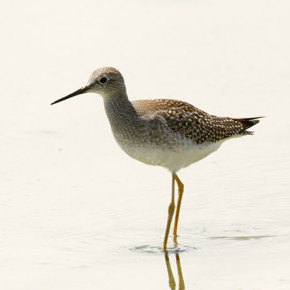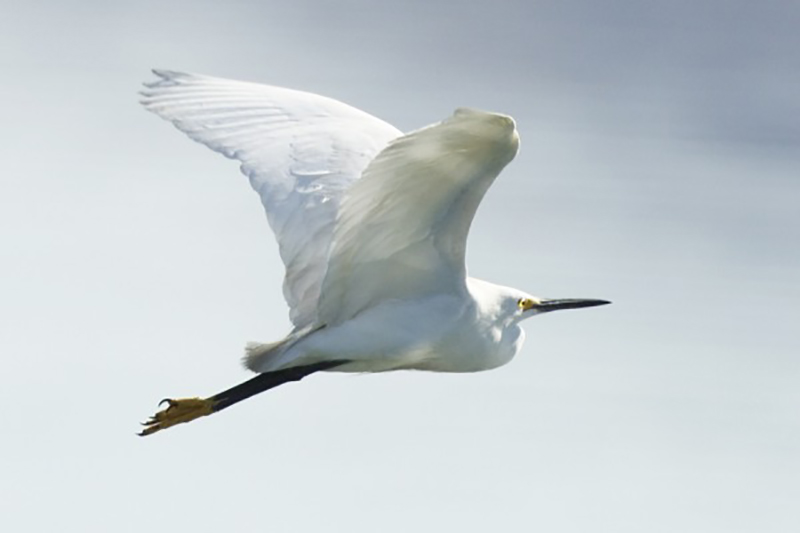 Ok, so I may have conned you into reading this with that title…but this is just another article about birding in Zihuatanejo. Most of those long legs belong to a group of egrets and herons, easily found in the canal at Playa Madera, which empties onto the beach, so I’m not too far off. I just didn’t think I would catch as many of you with the title, “LONG LEGS IN THE CANAL!” So, as long as you’ve read this far, you might as well finish reading.
Ok, so I may have conned you into reading this with that title…but this is just another article about birding in Zihuatanejo. Most of those long legs belong to a group of egrets and herons, easily found in the canal at Playa Madera, which empties onto the beach, so I’m not too far off. I just didn’t think I would catch as many of you with the title, “LONG LEGS IN THE CANAL!” So, as long as you’ve read this far, you might as well finish reading.
The biggest bird down there is the Great Blue Heron, blue as its name implies, 46 inches tall with a wing span of six feet. Next in size is the Great Egret, all white with black legs and a large yellow bill, 39 inches tall. Another egret, the Snowy Egret, at 24 inches, is also all white but its bill is black and it has bright yellow feet attached to long black legs. There is one more egret in town, the Cattle Egret at only 20 inches but would never be seen in the canal. You find them in the fields following cows because they eat the bugs that the cattle scare up while grazing.
Other herons you might find in the canal are the Tri-colored, Little Blue, Green, and Black Crowned Night Heron. The Tri-colored is blue with a reddish neck but only 26 inches tall so you would never mistake these for a Great Blue or a Little Blue that has no reddish color to it at all…..but to complicate your life just a little, the juvenile Little Blue is not blue at all; its all white until it becomes an adult, so don’t mistake it for an all white Snowy Egret…check to see if the feet are yellow or not.
The Green Heron is the smallest at 18 inches. Also, if it is not reaching for food, it shows no neck; the head looks like it is directly attached to its body and gives it a hunch-backed look. Its reddish/yellow legs are pretty short so you usually find them on the sloping sides of the canal or in very shallow water. Another heron I have seen in the canal is the Black-Crowned Night Heron and as its name says, you’ll only find them feeding there at night. And the first question that pops up is, “if it’s night, how can you see them?” Ah-ha, good question. There are several areas along the canal that have street lights near by and it is possible to see this 24-inch bird because of its dark black head and back contrasting to the rest of its white body. If you’re lucky, you can also see them in the daytime on their roost way back in the shade of a tree…where you might also see a Yellow-Crowned Night Heron…that does not have an easily seen yellow crown. So let’s confuse you a little more. In the past few years there have been juvenile White Ibis in the canal and these are brown…and you thought birding was easy, didn’t you?
There are a couple of other “leggy” birds to see in the canal: Black Necked Stilts, Lesser Yellow Legs, and maybe a Sandpiper or two, along with a few birds that have “normal” length legs, Great Tailed Grackles, Neotropic Cormorants, and in the trees and bushes alongside the canal, Streaked-backed Robins and in the grasses, White Collard Seedeaters.
There are several other places to see some of these birds. One is the north side of the boat basin while you’re in town for dinner. Just walk across the bridge and turn right for a couple of hundred yards. Be sure to go around five p.m. to have the sun at your back. There is also the lagoon at Barra de Potosí where you can rent a boat and driver to check out the birds. If you’re in the Troncones area, where I have not been birding yet, I would guess that most B & B owners could suggest some places to go looking.
Now I know that wandering over to the Playa Madera canal to see these birds is not convenient for most people staying in Ixtapa. So in order to make your life easy, there is a place in your area that not only has most of the birds that have been mentioned, but even more that are seldom seen in the La Madera area.
Hop on the bus that goes to Playa Linda and get off at the end of the line. On the “ocean” side there is a boardwalk on a crocodile pond. There, you might see all the egrets and herons mentioned. If you cross the street to the bike path and look straight into the mangrove branch entanglement you might see various birds sitting on nests, at least we did last February. We saw Great Egrets, Snowy Egrets, Boat-billed Herons and Wood Storks in various stages of nesting and raising their young. If you walk farther down the path for 10 or 15 minutes—depending how fast or slowly you walk—you’ll come to another viewing platform that overlooks the swamp and have the chance to maybe see Anhingas, various Rails, Kingfishers, a Louisiana Waterthrush…or as Jim Caldwell and I did last year, a pair of Chestnut-bellied (Agami) Herons! Two birds that didn’t read their bird guide books, these are birds of the East coast of Mexico and should not be living in this area. Or maybe, like us, they were just here on vacation.
If you want to look me up, I may still be here, eating my daily shrimp cocktail at Paty’s, or I can always be reached at lardor@yahoo.com If you want to talk, walk, peep, hoot or chirp, birding….
- Belted Kingfisher, photo Robert Shantz
- Belted Kingfisher, photo by Robert Shantz
- Black-crowned Night-Heron (juv), photo by Robert Shantz
- Black-crowned Night-Heron, photo by Robert Shantz
- Black-crowned Night-Heron, photo by Robert Shantz
- Boat-billed Heron, photo by Jim Caldwell
- Great Blue Heron, photo by Robert Shantz
- Great Blue Heron, photo by Robert Shantz
- Great Blue Heron, photo by Robert Shantz
- Great Egret, photo by Robert Shantz
- Great Egret, photo by Robert Shantz
- Lesser Yellowlegs, photo by Robert Shantz
- Snowy Egret, photo by Robert Shantz

